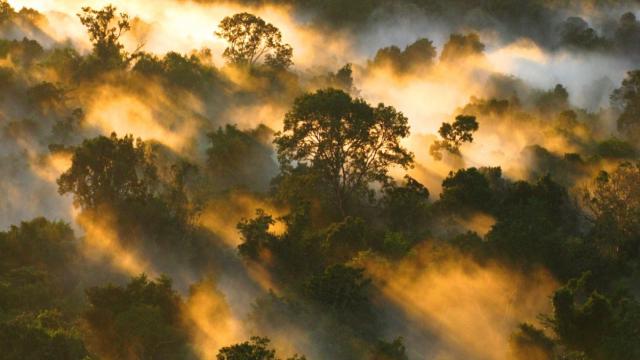
How is it that in a year stuffed with conferences on environment and human development, from climate talks in Paris and on new development goals in New York, those actually trying to save the environment are at best dismissed as enemies of progress, and at worst are being killed at an increasing rate and with almost complete impunity?
There is a recognizable theatrical form at UN summits where environmental agreements get negotiated and signed. It starts with general anticipation, the unreasonable expectations and triumph of hope over experience. There are the well-meaning but often leaden stunts by campaign groups in conference halls. Rumors flow for days like tides about good and bad deals being cut.
Then, insomniac civil servants wage self-important all-night battles like mythic warriors transplanted to the set of The Office, over the wording of compromised treaties. The final act always combines face-saving statements against a chorus lamenting how far short proceedings have fallen. And then the cycle repeats.
If you’ve ever been to one of these events, you’ll have experienced the air of unreality and disconnection they have in common. Air-conditioned, lacking natural light, fed and fueled by listless, overpriced corporate catering, they couldn’t be more removed from the natural environment they are meant to protect, or from the often brutal reality of doing so on the ground.
It’s a world far removed from the grief of the family of Daniel Humberto Sánchez Avendaño, the 19-year-old Colombian environmentalist murdered after being harassed by police and threatened because of his campaign against a local mine. Or that of Henry Alameda, an indigenous leader in the southern Philippines and an active member of a group protesting against mining and plantations in the Caraga region, who was killed by paramilitaries.
Last year more than two activists per week were killed struggling to defend their environment and land. That represents an increase of 20% over the year before, and is about double the number of more high-profile and equally tragic killings of journalists in the course of their work. The updated research by Global Witness is almost certainly an underestimate because countless crimes, often happening in remote areas, go unreported.
Worse, the very authorities who should be investigating are often implicated. Among the few cases that were well-documented, 10 involved paramilitary groups, eight the police, five privately hired security guards, and three the military. Research on killings of activists in previous years revealed that only around 1% led to trials, prosecution and conviction. Central and South America remains one of the most dangerous places to be an environmentalist, but even worse reporting in parts of Africa, for example, probably masks dire problems there too.
From the struggle for land and food systems that are best able to guarantee the livelihoods of people in poverty, to protecting the webs of plant and animal diversity that maintain all our life-supporting ecosystems, local communities have a central role in determining the direction of development. Where they have secure tenure of land, not only can they guarantee their livelihoods better but also, for example, they can reduce the cutting of vital tropical forests.
As we place ever more stress on the environment by undermining soil fertility, driving countless species to extinction and triggering climatic upheaval, voices such as those of Humberto Sánchez and Alameda should be on the world stage, not buried beneath the earth.
Work by the British Antarctic Survey shows that we have already reached a level of greenhouse gases in the atmosphere at which, millions of years ago, the stability of the great ice sheets was compromised to the extent that the planet experienced extreme and chaotic rises and falls in sea level. It is as if a slow-motion carbon bomb is exploding.
Part of the explanation for officialdom’s enduringly sanguine response to this prospect could be that in the conference halls of Paris, New York or wherever, they are so removed from the real world of hydrological cycles, storms, droughts, failed crops and battles over resources.
It is community-based defenders of the environment who know only too well what undermines or strengthens their livelihoods, that are like environmental bomb disposal experts, risking their lives in the field, on the frontline. Of those killed, a shockingly high proportion, 40%, were indigenous people. This represents a stern rebuke to those who try to brand environmentalism a northern, middle-class concern.
Instead of ignoring activists’ existence, or worse having them tried as terrorists, governments should be monitoring and protecting them, as if their own lives depended on it.
3 WAYS TO SHOW YOUR SUPPORT
- Log in to post comments











